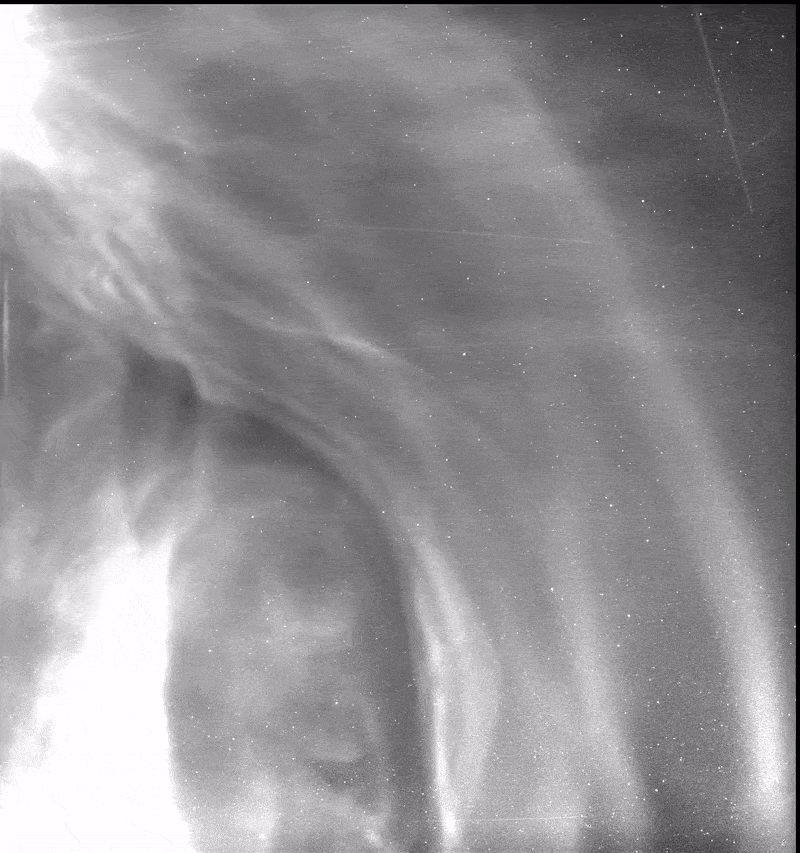Last year, the Sun burped out one of the largest releases of plasma and magnetic fields since we started watching it closely, and the Parker Solar Probe flew through it, capturing incredible observations and footage. Considering the impact events like this can have on satellites and even on Earth, its survival is a testimony to NASA’s preparation.
Coronal mass ejections (CME) are less famous than the solar flares and sunspots they usually accompany, but they’re also what travelers in the inner Solar System really need to watch out for. CMEs involve protons and electrons caught in a powerful magnetic field. We first learned of their existence in the Carrington Event in 1859, when one created a geomagnetic storm that gave telegraph operators electric shocks and damaged their equipment.
The Earth hasn’t experienced anything like that since, although smaller events have had worse effects in a more technologically developed world. However, similarly sized CMEs have been witnessed, fired off in other directions. Space is big, and the vast majority of CMEs miss the Earth.
On September 5, 2022, a particularly powerful CME was racing away from the far side of the Sun when Parker plowed through it on its way to its closest solar approach the following day. NASA has now released a study of what happened. The plucky probe continued to collect data since, and the report tells us something both about the effect CMEs have on the inner Solar System, and on the capacities of the instrument sent to observe them.

How the giant coronal mass ejection looked to Parker’s Wide Field Imagery for Solar Probe (WISPR)
Image Credit: NASA/Johns Hopkins APL/Naval Research Lab
The study highlights the fact that Parker has confirmed a 20-year-old theory that CMEs collect dust as they go, ionizing it and pushing it away from the Sun. “These interactions between CMEs and dust were theorized two decades ago, but had not been observed until Parker Solar Probe viewed a CME act like a vacuum cleaner, clearing the dust out of its path,” said Dr Guillermo Stenborg of the Johns Hopkins Applied Physics Laboratory in a statement.
The dust is left behind by comets as the ice holding them together boils away, and from collisions between asteroids. Its presence is the reason we have meteors, and the zodiacal light. Comets do most of their shedding close to the Sun, but it now seems likely that CMEs help distribute it more evenly.
Parker observed that the CME created an area cleared of gas to a distance of 10 million kilometers (6 million miles) from the Sun, but other material quickly replenished it.
“Parker has orbited the Sun four times at the same distance, allowing us to compare data from one pass to the next very well,” Stenborg said. “By removing brightness variations due to coronal shifts and other phenomena, we were able to isolate the variations caused by dust depletion.”
The Parker Solar Probe has repeatedly broken records for the fastest object humanity has produced and the closest probe to the Sun, and now earns new status as a survivor. On the one hand, it was lucky to pass only through the CME’s outskirts, but on the other, the encounter happened less than 14 million kilometers (8.7 million miles) from the Sun, a tenth of the distance to Earth. By the time CMEs reach us, they’ve had a chance to dissipate somewhat. Parker’s survival proves it is possible to harden instruments against the damage caused by so many fast-moving charged particles.
The discovery could improve future warnings of dangerous CMEs. Current alerts are issued only 30 minutes before storms hit, because we have trouble predicting how fast CMEs move as they cross the gap between the Sun and us. Interactions with dust may contribute to this uncertainty, and if so Parker’s observations could be very helpful.
Last month Parker used Venus’s gravity well to reduce its orbit still further, bringing it closer still to the Sun, just as what looks like being an epic peak to the solar cycle approaches. A smaller CME caused spectacular auroras over Scandinavia, Canada, and parts of the United States last night, and there could be more to come tonight.
The study is published open access in The Astrophysical Journal
Source Link: Parker Solar Probe Survived A Massive Explosion From The Sun And Caught It All On Camera